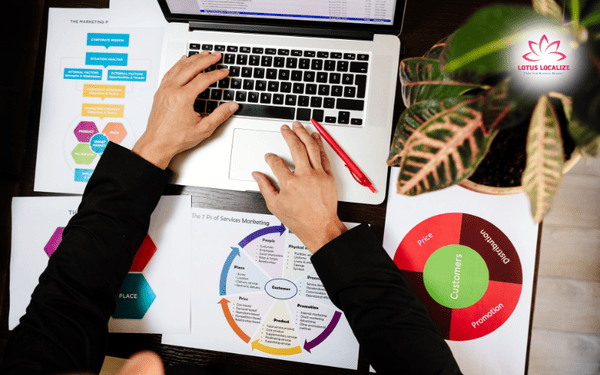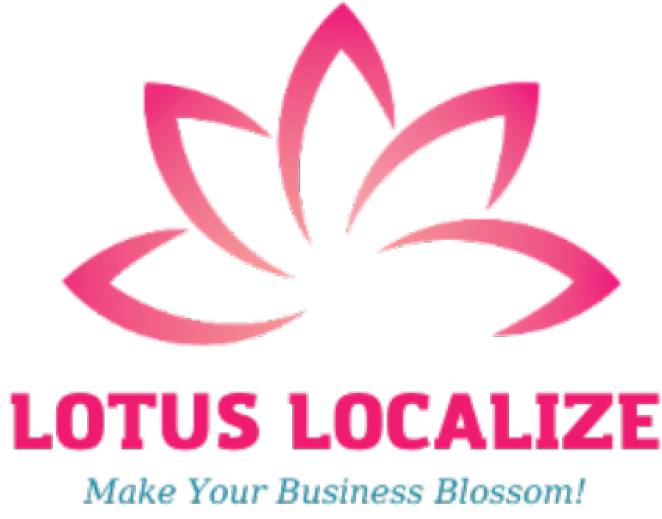
8 localization mistakes you must avoid for global success
Expanding into new international markets brings exciting growth opportunities, but avoiding localization mistakes is crucial for success. Effective localization goes beyond simple translation; it involves a thorough adaptation of products and content to align with the cultural, regulatory, and technical expectations of each target market. When localization is executed correctly, it builds trust, enhances brand appeal, and boosts customer engagement. However, common localization mistakes can lead to a poor user experience, harm a brand’s reputation, and result in revenue loss. Here are eight localization mistakes you should avoid to ensure a smooth and successful global expansion.
8 common localization mistakes that can derail your global strategy
Ignoring cultural sensitivities
One of the most significant localization mistakes is failing to account for cultural nuances. Colors, symbols, gestures, and even certain words may carry vastly different meanings across regions, and what works in one market may be offensive in another. A lack of cultural understanding can cause your brand to seem tone-deaf and disconnected from local audiences.

Example: A global fast-food chain launched an advertising campaign featuring an image of a happy cow in India. Unbeknownst to the brand, cows are considered sacred in Hindu culture, and using the image in the ad resulted in backlash and protests.
Solution: Conduct thorough cultural research to understand the values, beliefs, and taboos of each target market. Collaborate with local cultural consultants to adapt content, visuals, and messaging to respect and resonate with the audience. Test campaigns with local focus groups before launching.
Read more: Translation vs localization: What you need to know for effective global communication
Incorrect language use
Literal translations or failure to adapt language to local dialects can lead to confusing, awkward, or even offensive content. Even seemingly small linguistic differences can have big impacts. Words, idioms, and expressions that work in one language may not have the same meaning—or may not even exist—in another.
Example: A European company translated its website into Spanish without considering regional variations, using a term that was common in Spain but completely unknown to Latin American audiences. This led to confusion and poor customer engagement.
Solution: Work with native-speaking linguists familiar with regional dialects and idioms of each target market. Avoid direct translations and ensure the language feels natural and appropriate for local speakers. This helps maintain your brand voice and ensures clarity.
Inconsistent design choices
Design elements such as colors, fonts, and layout may not resonate the same way in different countries. What is considered visually appealing or standard in one market might be viewed as unprofessional or off-putting in another. Inconsistent design choices can reduce user engagement and diminish the overall experience.

Example: An American clothing retailer launched a global e-commerce site without adapting its design for right-to-left languages like Arabic. The website’s navigation and visuals were misaligned, creating a frustrating user experience for Arabic-speaking customers.
Solution: Ensure that your design adapts to local preferences, including text direction for languages like Arabic and Hebrew, and colors or fonts that may have specific connotations. Collaborate with local designers to make sure the look and feel of the product are culturally and visually appealing.
Measurement & unit conversion errors
Measurement systems vary widely across the world, and failing to convert units accurately can create confusion or even safety risks. Inaccurate unit conversions may impact everything from product sizing to dosage instructions in health-related products. This can lead to product misusage or misunderstandings.
Example: A health supplement company in the U.S. failed to convert dosages from imperial to metric units when selling in European markets. The confusion caused by the unconverted measurements led to complaints and regulatory scrutiny.
Solution: Always ensure that all units of measurement are properly converted to match local standards, including size, weight, temperature, and volume. Double-check conversions for accuracy, especially for sectors like healthcare or food, where precision is critical.
Overlooking local regulations and compliance requirements
Each country has its own set of legal requirements and regulations that may affect product labeling, advertising, and distribution. Overlooking these rules can result in fines, delays, or even the removal of your product from the market.

Example: A pharmaceutical company launched a product in Europe without complying with the region’s strict labeling and packaging regulations. As a result, the product had to be recalled, which not only caused financial loss but also harmed the brand’s reputation.
Solution: Conduct a thorough review of local regulations in each market before launching. Work with legal experts to ensure your product and its marketing materials comply with local laws, and stay updated on changing regulations.
Failing to adapt to local user behavior and preferences
User behaviors and preferences can vary widely between markets. What works in one country may not work in another. From website navigation to the way customers make purchasing decisions, failing to adapt to local user behavior can lead to missed opportunities and poor conversion rates.
Example: A global online retailer launched in Japan with the same website layout it used in the U.S. However, the layout didn’t account for the Japanese preference for minimal text and compact design, resulting in low engagement and a poor shopping experience.
Solution: Study local market trends, user behavior, and consumer habits to adjust your digital experience accordingly. Localize your website design, product offerings, and marketing strategies to meet local needs. A/B test different layouts and features to understand what resonates best with local customers.
Rushing the process
Localization is a complex process, and rushing through it can result in errors that affect product quality and user experience. Whether it’s a rushed translation job or skipping crucial cultural research, failing to dedicate enough time to localization can lead to mistakes that are costly to fix.

Example: A tech company hurriedly launched its app in a new market, opting for a quick translation without fully adapting the user interface. This led to issues such as broken links, confusing navigation, and poor language usage, frustrating users and damaging the brand’s credibility.
Solution: Allocate sufficient time for every step of the localization process. Plan ahead and allow for review cycles, feedback from local experts, and user testing to identify issues before launch. Avoid taking shortcuts that compromise quality.
Neglecting SEO for local search behavior
SEO practices differ across regions, and neglecting to optimize your content for local search behavior can lead to poor visibility in search engine results. Keywords that work well in one market may not have the same relevance in another, and search engine algorithms may differ between countries.
Example: A global beauty brand failed to adjust its keyword strategy when entering Asian markets, relying solely on the same English-language keywords that worked in the U.S. As a result, the brand’s website failed to rank well in search engines, limiting its visibility and organic traffic in key markets.
Solution: Conduct thorough keyword research for each target market, focusing on local search behavior, preferences, and regional search engines. Adapt your SEO strategy for local language, search terms, and content preferences to improve visibility and drive organic traffic.
By recognizing and avoiding these common localization mistakes, businesses can ensure a smoother, more successful global expansion. Paying attention to cultural nuances, local regulations, and user behavior, while investing time in proper planning and testing, will help you build strong, lasting connections with customers worldwide.
Read more: Pharma translation: Why it’s crucial in the global pharmaceutical industry
How to avoid these localization mistakes: Best practices for success
Avoiding localization mistakes requires a proactive, well-structured approach that prioritizes accuracy, cultural understanding, and quality assurance. Below are key best practices to guide you toward successful localization:
- Conduct in-depth market research: Begin with a comprehensive study of each target market, including its cultural nuances, regulatory environment, and user behavior. Knowing the preferences, expectations, and cultural taboos of your audience allows you to craft content that resonates and respects local norms. Additionally, understanding local regulations helps you avoid potential legal setbacks, ensuring a smoother entry into new regions.

- Partner with local experts: Localization is not just about translation; it’s about capturing the essence and context of a message. Collaborating with native linguists, cultural consultants, and legal advisors familiar with the target region provides insights that automated translation tools cannot offer. Local experts help identify cultural nuances, dialect variations, and regulatory requirements, ensuring accuracy and relevance.
- Use a robust quality assurance process: High-quality localization depends on rigorous quality control at every step. Set up a clear review and testing process that includes linguistic checks, cultural validation, and functional testing. Multiple review cycles help catch errors early, maintaining consistency across languages and formats. Consider implementing a feedback loop with native speakers for continuous improvement in localized content.
- Optimize for local SEO: Each market has unique search behaviors, so tailoring your SEO strategy to each region maximizes visibility and reach. Research keywords that locals commonly use, incorporating them into your content, meta tags, and descriptions. Also, consider using search engines popular in specific regions, like Baidu in China or Naver in South Korea, to align with local search preferences and enhance your digital presence.

- Adapt design elements to local preferences: Visual elements—such as colors, layouts, and text direction—carry cultural significance and can greatly impact user experience. For example, red is a color of prosperity in China but can signify danger in Western cultures. Ensure that your design adjusts to the visual and functional preferences of each market, including right-to-left text alignment for languages like Arabic and Hebrew. Collaborating with local designers can ensure that visual elements align with cultural expectations and create a seamless experience.
- Test your product with local users: To capture genuine feedback, conduct user testing in each target market. This real-world testing phase allows you to uncover potential usability issues, from confusing language to design missteps. Local testing not only identifies issues but also validates that your localized product feels authentic and intuitive to native users.
- Plan sufficient time and resources: Localization is a detailed, multi-layered process that should not be rushed. Give yourself ample time to carry out each phase—from initial research to testing and review. Allocate resources for possible delays, as thorough localization often requires iterations to meet high-quality standards. Rushing through localization can result in errors, so ensure that your project timeline allows for careful, comprehensive execution.
- Monitor feedback and make continuous improvements: Localization is not a one-time task; it requires ongoing refinement to keep up with changing cultural trends, customer expectations, and regulatory updates. Encourage feedback from local customers and partners, and use this input to make necessary adjustments over time. Continuous updates ensure that your content remains relevant and aligned with each market’s evolving needs.
By following these best practices, you create a localized product or service that not only reaches your target audience but also builds trust, enhances user satisfaction, and strengthens your brand’s global presence.
Localization is essential for companies looking to thrive in a global marketplace. By adapting content, design, and compliance strategies to fit the unique cultural, regulatory, and behavioral nuances of each target market, businesses can create a seamless user experience that builds trust and enhances brand reputation. Avoiding common localization mistakes—like neglecting cultural sensitivities, rushing the process, or overlooking local SEO—can make the difference between a successful expansion and a costly misstep.
When executed thoughtfully, localization fosters strong connections with diverse audiences, strengthens brand loyalty, and opens the door to sustainable international growth. With careful planning, collaboration with local experts, and an ongoing commitment to quality, your global strategy can deliver meaningful engagement and success in every market.
Lotus Localize offers professional localization services: software localization, website localization, app localization, game localization,… ensuring your message resonates—whether in writing or speech. Let us help you bridge linguistic gaps and connect with audiences worldwide.
Contact us today at our hotline or Whatsapp: + 84 866 224 968 or visit the websites: dichthuathoasen.com/en/. Let Lotus Localize accompany you in bringing products, people, and culture to the global stage, and together, we’ll create miracles!
QUALITY PROMISE
At Lotus Localize, we are dedicated to delivering high-quality services and ensuring the utmost satisfaction in every client project. Our team of translators and staff consistently exert effort and adhere rigorously to quality management procedures. This commitment guarantees that each project progresses seamlessly, meets deadlines, and exceeds our clients' expectations.












